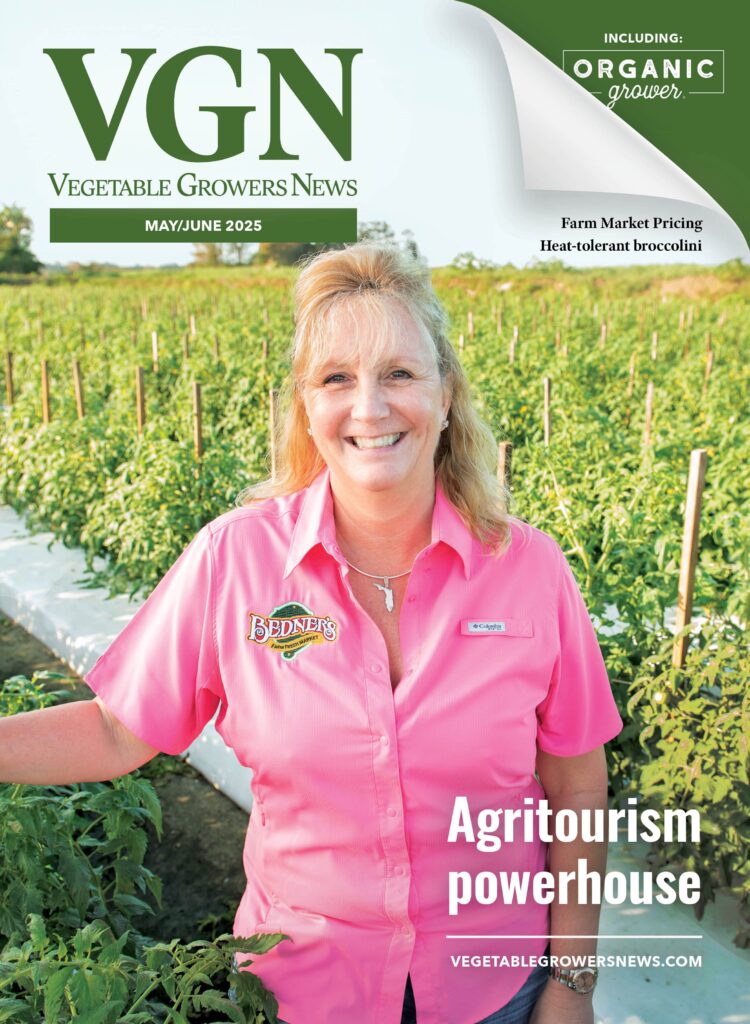Apr 7, 2007New York Grower Harvests 1,300 Acres of Sweet Corn Annually
If you’d like to eat fresh sweet corn on the cob every week of the year, you’ll want to know the Gill family from Hurley, N.Y. They can fix you up.
Not only do the Gills grow 1,300 acres of sweet corn every year on the home farm in the Hudson River Valley, near the base of the Catskill Mountains and an hour north of New York City, they can “fix you up” year round with corn from Georgia and Florida.
“We probably do a million boxes a year,” said John Gill.
At 48 ears to a box, that’s four million dozen, of which just over a third comes from Gill Farms itself. The rest is from growers they work with in southern Georgia and near Homestead, Fla. The Gills organize the packing and selling of all that corn.
“We sell sweet corn from our home farm from July to Oct. 1,” John said. “Then we move Georgia corn until mid-December. We’re in Florida from Christmas to March or April, come back to Georgia for a second crop, and then we’re back home.”
Gill Farms sells New York and Georgia corn under the Gill Farms name and Florida corn under the name of the Homestead Pole Bean Co-op. The corn ends up in chain stores along the East Coast and as far west as Texas, but some of it is sold from the New York farm as well.
Gill Farms was started in 1937 by John’s grandfather, also named John. When the current John was growing up with his brother, David, the farm was operated by their parents Jack and Charlotte Gill. They are still active in the business, as is David.
Charlotte and John’s wife, Loretta, handle the direct-from-the-farm sales, running two markets and two greenhouses. David and Jack handle corn and other vegetable production, and John has always had an interest in marketing.
When John was in college, he had to design a business for a class. He designed a new roadside stand. While he doesn’t say what grade he got in the class, he got an A at home. His parents built the new stand.
Today, their marketing efforts include the small market they had before John left college, plus four 30- by 90-foot greenhouses and a 21- by 40-foot display house. The farm grew from 400 acres to 1,600, with about 100 of them devoted to mixed vegetables and pumpkins.
One of their enterprises is a 14-acre u-pick garden.
“I like it,” John said. “But people today like to have most of the work done for them.”
He finds people like to pick easier things, like flowers, eggplant, tomatoes and pumpkins, but don’t have much interest in picking green beans.
The greenhouses have taken off with sales of flowers and vegetable plants, and they’re also used to produce transplants for the farm’s vegetable fields.
But sweet corn is John’s passion. The reason he became involved in production and sales from New York to Florida is the need to serve retailers year round, he said.
John likes his computer. In an interview published in Farm Credit of Maine’s newsletter, John was quoted: “I’m hooked on the challenge of computer puzzles and keep all my bookkeeping, invoicing, bills of lading, checking accounts, spray records, crop records, yield records and planning records online.”
The newsletter focused on the entrepreneurial skills of several Farm Credit borrowers, including John.
In the New York operation, sweet corn planting starts in April and goes on until July 10. About 60 percent of the Gill corn is yellow, 25 percent white and 15 percent bicolor, and they plant two or three varieties of each, all sh2.
“We’re getting into the multi-sweets as well,” John said.
These varieties have lots of sweetness and hold it well, with the additional advantage of the tender pericarps associated with se varieties.
Besides sweetness, tenderness and flavor, corn needs to have good husk cover, dark green husks and short shanks, he said.
Harvesting is done with two corn pullers – they do less damage than machines with snapping rolls, he said – so short shanks are needed if corn ears are going to fit into the box.
Corn harvest is a big operation, involving two corn pullers, eight tractors, wagons and the packing operations where corn is packed, stacked and loaded. About 100 employees work on the New York farm during harvest.
This year at the Gill Farm markets, corn started the season at $5 a dozen and held at $4 throughout. Those are good prices, John said, but costs are rising, too. Just ask him about energy prices.
















